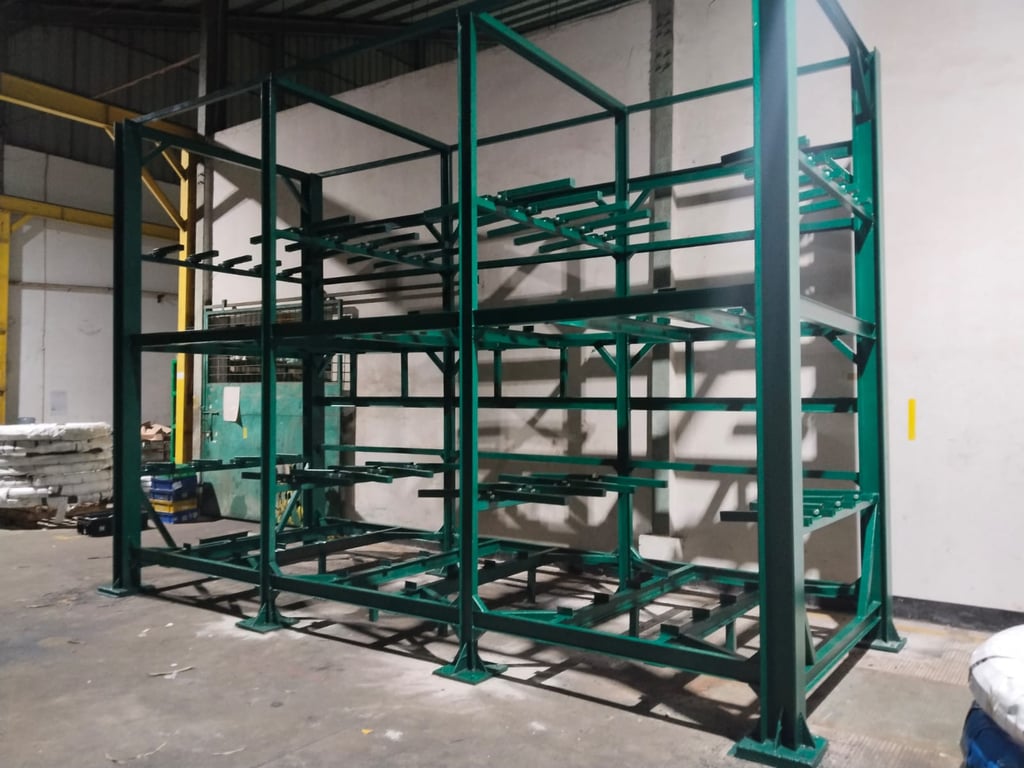Building Custom Duty Rack To Enlarge Your Spaces
In this guide, we’ll walk through the essential steps and considerations you should keep in mind when building your own rack duty, so you can create a solution that’s both functional and tailored to your brand.


When it comes to storing heavy and bulky materials like steel coils, wire rolls, or industrial cables, having the right racking system is critical. A well-designed coil rack not only keeps your warehouse organized but also improves safety, protects your materials, and allows for smooth handling during operations. In this guide, we’ll explore the most important factors to consider when designing or building a custom racking system for coils.
Define Your Storage Needs
Before starting the design process, clearly identify your requirements. Measure the diameter, width, and weight of the coils you plan to store. Think about how many coils you need to accommodate and whether they will be handled by forklift, crane, or manually. Accessibility is key—your racking should allow for easy loading and unloading without causing damage to the coils.
Choose the Right Materials
Since coil racking must withstand heavy loads, high-strength structural steel is usually the best choice. Make sure the material is designed to handle the maximum weight of your heaviest coils. To extend the lifespan of your racks, apply anti-rust coatings or powder paint, especially if your storage area is exposed to humidity or outdoor conditions. Stability is also important: racks should be anchored to the floor or equipped with a reinforced base to prevent tipping.
Safety and Protection
Coils are heavy and potentially hazardous if not stored correctly. A safe racking system should include:
Load-bearing calculations to ensure racks can handle the maximum weight safely.
Safety locks or stoppers to prevent coils from rolling out of position.
Proper spacing between levels and aisles to allow for safe handling by forklifts or cranes.
Implementing safety standards not only protects workers but also reduces the risk of damage to expensive materials.
Optimize for Efficiency
A good racking system isn’t just about storage—it should also improve workflow. Arrange racks to support your production line or shipping needs, minimizing unnecessary movement. Consider modular designs so that additional levels or sections can be added as your inventory grows. If space is limited, vertical racking can help maximize capacity.
Branding and Professional Image
While function comes first, the look of your warehouse also represents your business. A clean and well-painted racking system shows professionalism to partners and clients visiting your site. Adding color coding or simple branding can also help workers quickly identify storage zones and improve efficiency.
Plan for Future Growth
Your coil storage needs today may not be the same in the future. Build flexibility into your system by leaving space for expansion. Opt for modular or adjustable racks so that you can add more capacity without replacing the entire setup. This forward-thinking approach saves both time and money as your business scales.
Conclusion
A custom coil racking system is more than just a storage solution—it’s an investment in safety, efficiency, and long-term growth. By choosing the right materials, focusing on safety, and planning for scalability, you can create a racking system that not only protects your coils but also enhances your overall operations.
Whether you’re handling steel, wire, or cable, the right racking system will help you run a more professional and productive business.